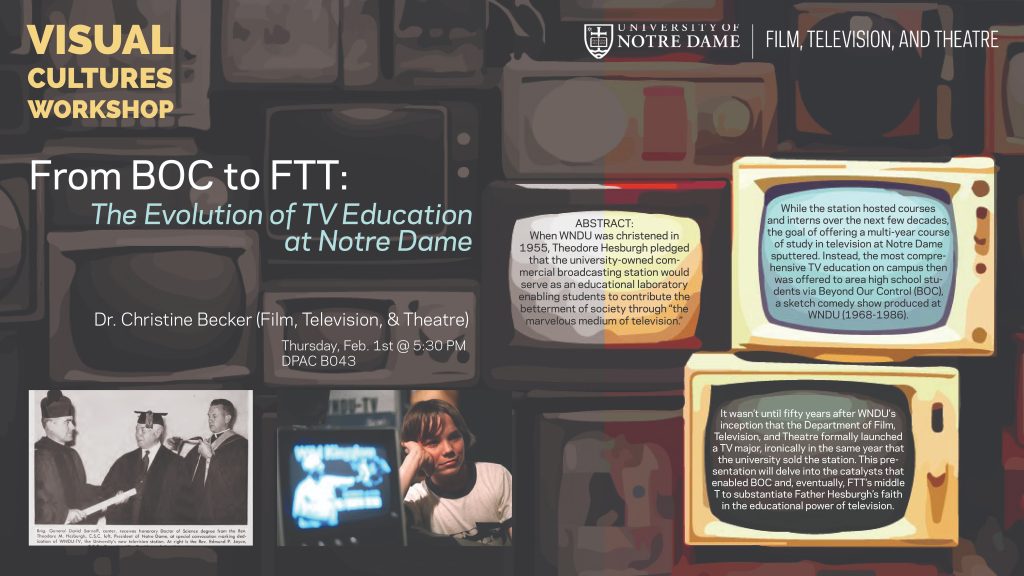
I delivered a presentation this week for my department’s monthly Visual Cultures Workshop. This work emerged from my research into the origins of BOC, because in exploring the founding and evolution of WNDU, I stumbled across a parallel history of the origins of my own department, Film, Television, and Theatre. This was personally fascinating to me from the jump, and as I dug deeper, I found intriguing throughlines that connected BOC and FTT, particularly when it came to their respective relationships with WNDU and the vision for television that Father Hesburgh expressed upon the station’s dedication. Most of the FTT stuff likely won’t make it into the book, but I’ll probably pitch it to ND Magazine, since it’s a revealing slice of university and Arts & Letters history.
If you’d like to watch the narrated PowerPoint presentation, it’s embedded below. If you prefer an audio-only version, you can find it here (and from there you can download it via the down-arrow button on the top right). And if I talk too fast for you to keep up or you just favor text, you can read it here.
Because of some Zoom recording glitchiness, I cut out the clips from the video, except for at the end. If you want to see what I showed, I opened with three clips to help those not familiar with BOC understand the nature of its humor and production methods: one film-themed, one TV-themed, and one theatre-themed, in honor of FTT. The clip from the middle of the talk is an excerpt from “Donawho.” And I left in the ending clips, but the audio is faint; if you want to see them intact, you can see the original Hesburgh wraparounds here, and the final clip at the start of this (with all due apologies to those offended).